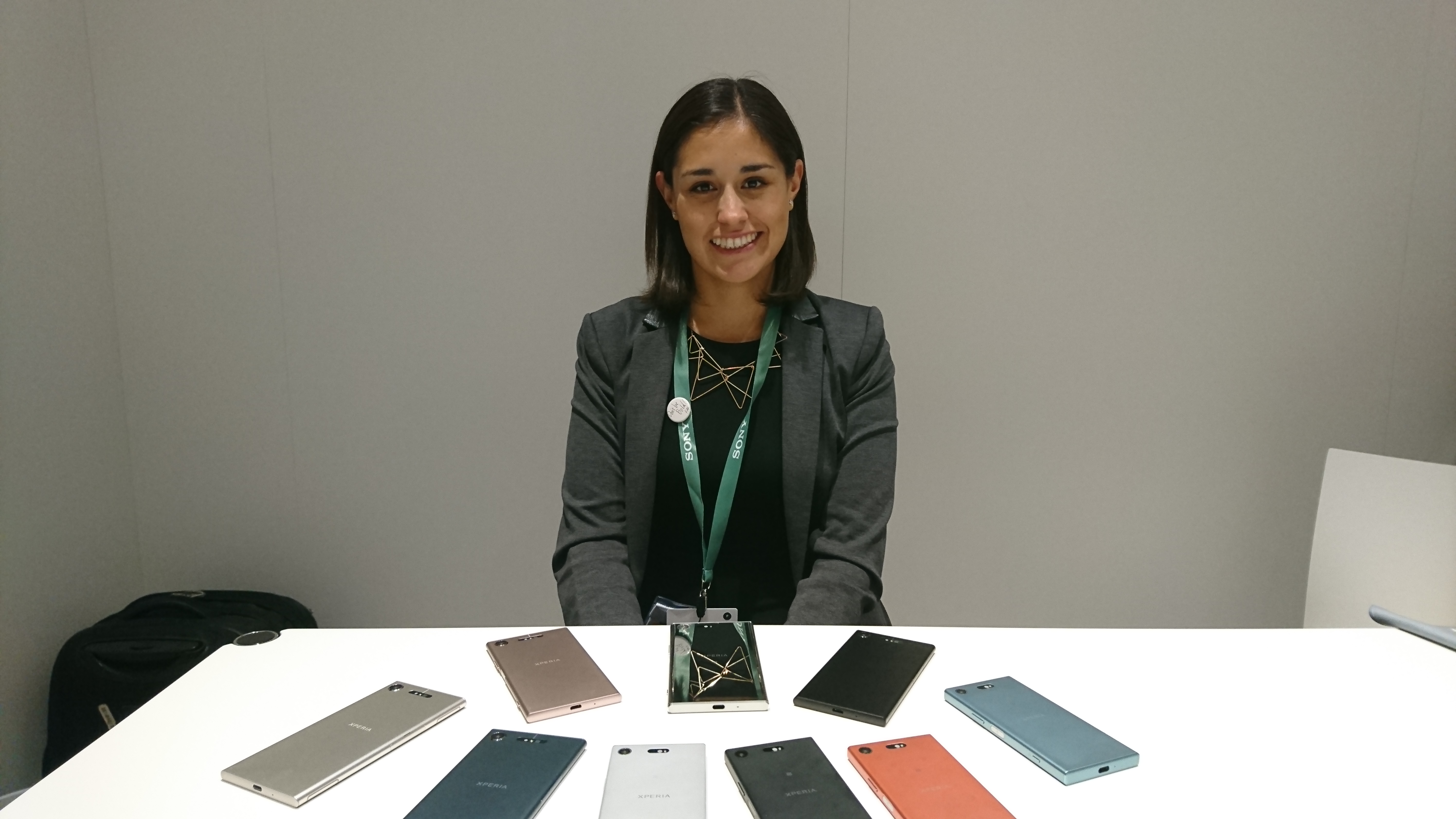
Sony has had a fairly busy year so far. At IFA 2017 earlier this year the company unveiled their latest flagship smartphone – the Xperia XZ1, along with several other devices across a variety of product lines.
Of particular note was the Xperia XZ1 Compact – here was a smartphone with fiercely competitive innards, yet in a smaller form factor. It seemed like Sony was determined to continue releasing smaller versions of their flagship phones, while still being able to offer a decent level of performance on these smaller models.
“We’re continuously listening to our fanbase, and they’re quite loyal with the brand,” says Diana Hernandez - Global Product Marketing Manager at Sony Mobile Communications. “A lot of users love to have a smaller device that can be carried around everywhere, and we found that in our latest surveys there’s quite a strong following for these kinds of devices. They’re easier to carry in the pocket, easier to use with one hand, so we still see a number of users who want the features of our flagship phone but in a smaller form factor.”
“It’s all down to Sony being able to pack all of this technology into a smaller form factor, just so we don’t compromise on performance for our customers. It’s a heritage we’ve been carrying around for a long time, so having things like the latest chipsets in our phones is very important, even when talking about smaller form factors. So at the end of the day the customers can enjoy the best performance from our devices, no matter which size they prefer to use.”
"Our challenge was to harness AR with its true potential, and make it so much more than just a flat sticker showing in a space"
Diana Hernandez - Sony Mobile Comms.
Performance is just part of the equation for Sony – the company’s Xperia XZ Premium was their first smartphone with a 4K HDR screen, supposedly borne out of the consumer’s need to watch high-quality media on the go. “For HDR content we know there’s a huge consumption of streaming services like Amazon Prime and Netflix. On mobile we know that people are watching a huge amount of content on the go, which is why we designed smartphones with HDR screens in them,” said Hernandez. “For TVs it’s a similar space, and I think as a company we’re going to keep focusing on it. We have a very close relationship with the team at Amazon Prime, and the XZ Premium was the first smartphone with 4K HDR screen, so it was the first time they were able to test their HDR content on a mobile phone. It’s a new technology, and we’re aiming to deliver the best quality of media no matter what platform you’re viewing it on.”

Certainly the biggest buzz around the Xperia XZ1 was that it heralded the company’s first formal push into the world of AR, via the 3D Creator app. The ability to scan a person’s face or their whole head in under a minute was unheard of before, especially with the level of detail that the app provided. AR has been around for years, but to date very few companies – especially in the smartphone segment – seemed to have embraced it.
“From the feedback of how people are responding to the 3D Creator app on the Xperia XZ1, we can see just how big AR is and how content can be created to take advantage of it,” notes Hernandez as we flip through the sample scans in the 3D Creator app. “Our challenge was to harness AR with its true potential, and make it so much more than just a flat sticker showing in a space, or something like that. With the 3D Creator app you get a lot more detail, and it’s very easy to use as well. We wanted it to be fast and easy for users to scan whatever they wanted, and within 60 seconds you can now generate a full 3D model of your scan. AR has come a long way since its early days, and we’re trying our best to keep it going forward.”
Get daily insight, inspiration and deals in your inbox
Sign up for breaking news, reviews, opinion, top tech deals, and more.
VR is another element that has firmly made the jump to the smartphone space, though according to Hernandez it’s not yet making a debut on Sony’s smartphone segment. “On the VR front we’re doing really well with PlayStation VR at the moment, so for we’re focusing on that, but I think at some point we’ll be looking at new ways to bring VR into the mobile space as well,” she adds.
For the future, Sony plans to keep looking at ways in which AR can help with user communication, and how the overall space is looking to evolve as well. “We’re listening to customers across multiple product spaces, and we’re continuing to speak to our sister brands to see what else is there to explore. One of the trends we want to keep an eye on is new ways of communications, which is something we’re just beginning to test with the 3D Creator. We’ll be looking at ways to make this even more relevant and fun for the end user, and that’s something we are really excited about.” concluded Hernandez.
A former IT & Marketing Manager turned full time Editor, Nick enjoys reviewing PC components, 3D Printers, projectors, and anything shiny and expensive. He can also be found baking up a storm in the kitchen, which we are more than happy to encourage.
